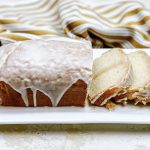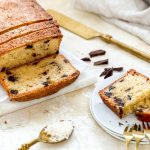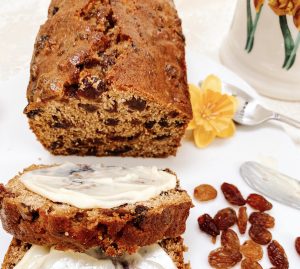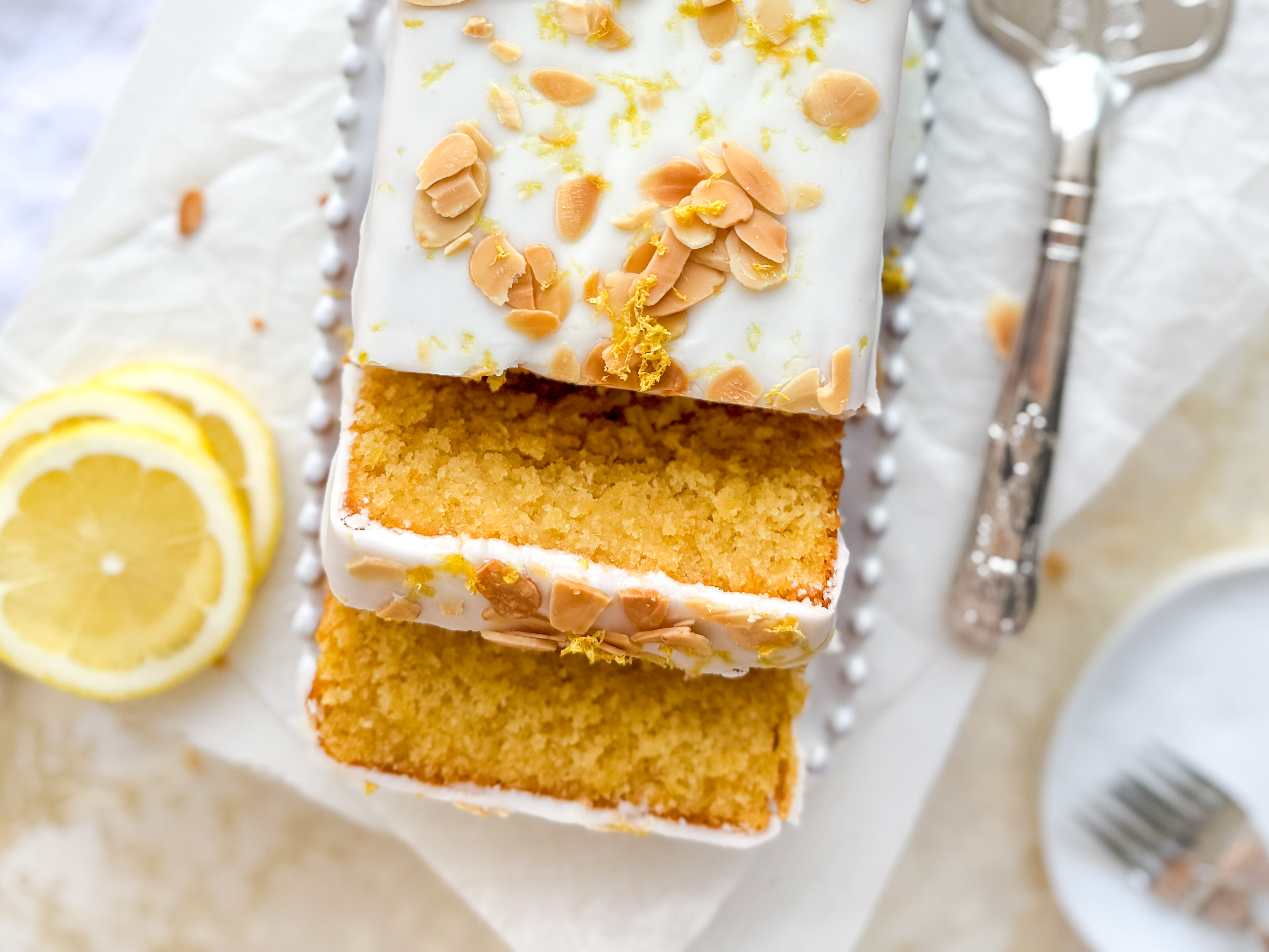
Citronmåne – Lemon Moon Cake, or Lemon Marzipan Cake
This Citronmåne, or Lemon Moon Cake, is a moist, fragrant cake laced with generous quantities of lemon, sweet almonds and marzipan and topped with a zesty lemon icing. If a cake can be considered a national treasure, it seems that Citronmåne would fall into this category in Denmark. As such, the number of recipes are too many to count.
The first recipe I came across for Citronmåne caught my attention because it included both lemons and marzipan. Two of my favourite things. On further research, all the recipes I came across were for lemon cakes, but not all included almonds and marzipan. Bamboozled by all the recipes on line, I took my favourite elements and this is the result. And what a fabulous cake it is! If you love Bakewell Tart, frangipane or marzipan and lemons, of course, then this cake will be right up your street. It is not an exceptionally light cake, but that is exactly how it is meant to be – moist and bursting with flavour. I love, love, love it with a cup of tea but equally, it makes a stunning dessert with some cream and some raspberries or strawberries.
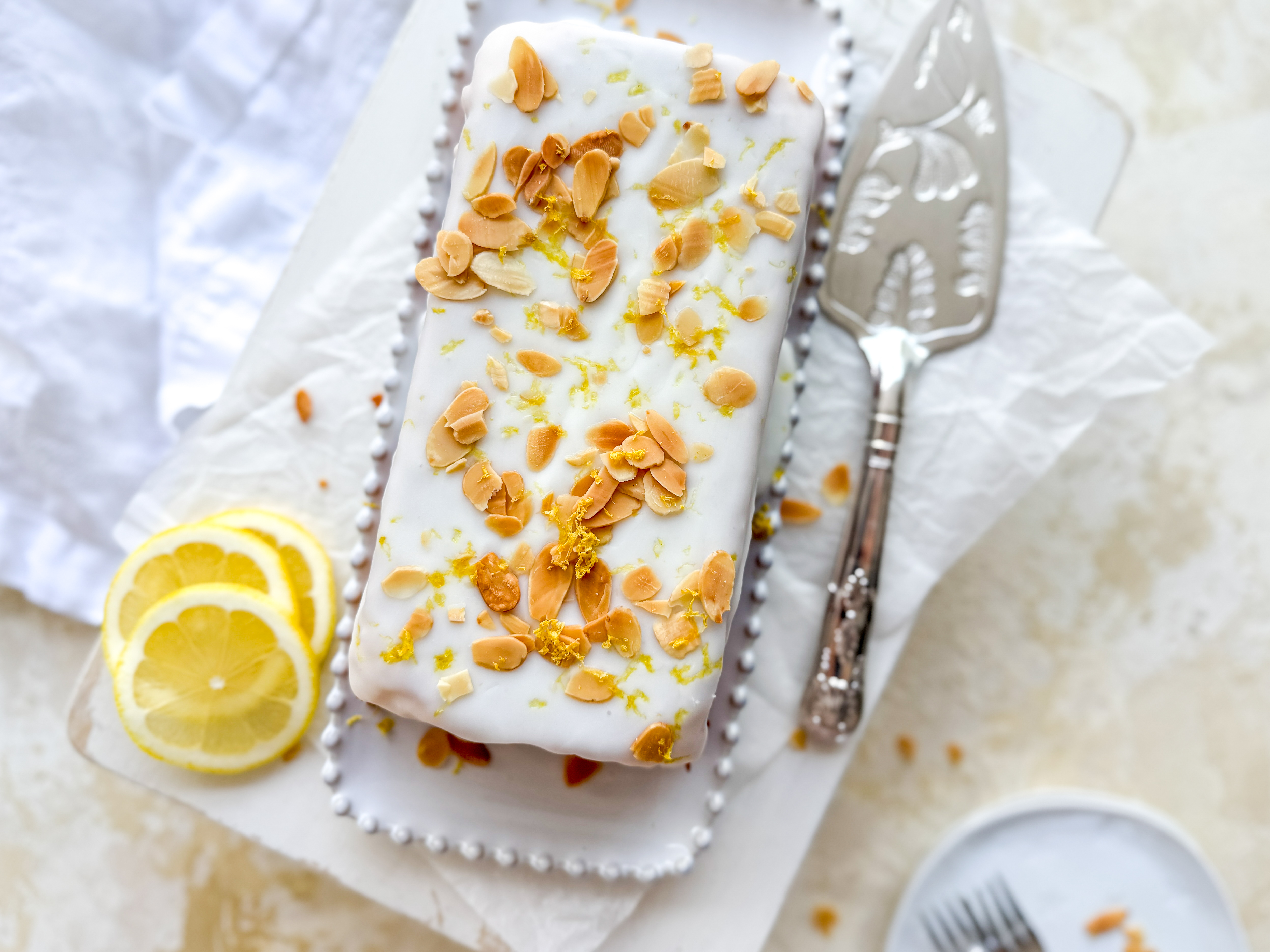
Can I bake this cake in a round tin?
I have a soft spot for a loaf cake but Citronmåne is classically baked in a round tin. Simply follow all the instructions below but bake it in a deep-sided 20cm/8 inch greased and lined round cake tin, if you prefer.
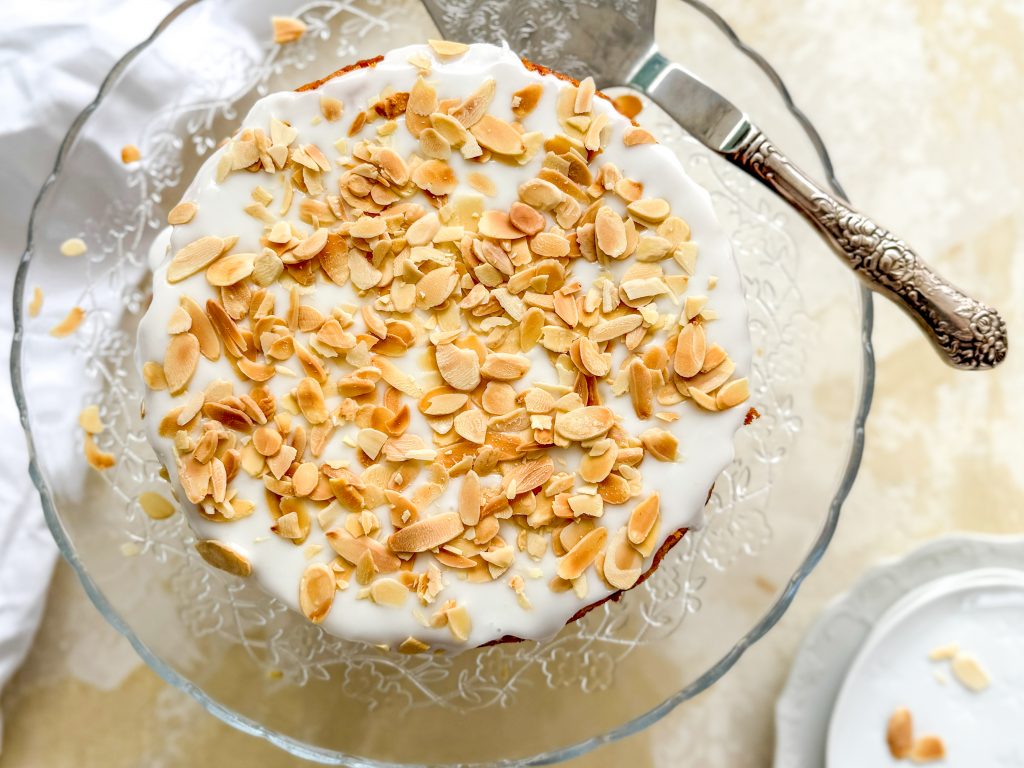
How to make Citronmåne – Lemon Moon Cake, or Lemon Marzipan Cake
Please see the printable Recipe Card below for the exact, yet condensed, quantities and instructions.
Where is this recipe from?
This recipe is based on my Sour Cream Cake – Core Recipe. It is a fluffy, buttery sponge which lends itself to a range of different recipes. All mixed in one bowl in less than a minute, this recipe can be used for loaf cakes, slices, sandwich cakes and also streusel cakes, to name just a few. It has a generous quantity of sour cream (or natural yoghurt) in the cake batter which guarantees a moist and soft crumb in each and every bake. The changes I made to the core recipe include:
- replacing some of the flour with ground almonds.
- folding in some grated marzipan.
- adjusting the baking powder and bicarbonate of soda to reflect the above changes.
- adding lemon zest and juice.
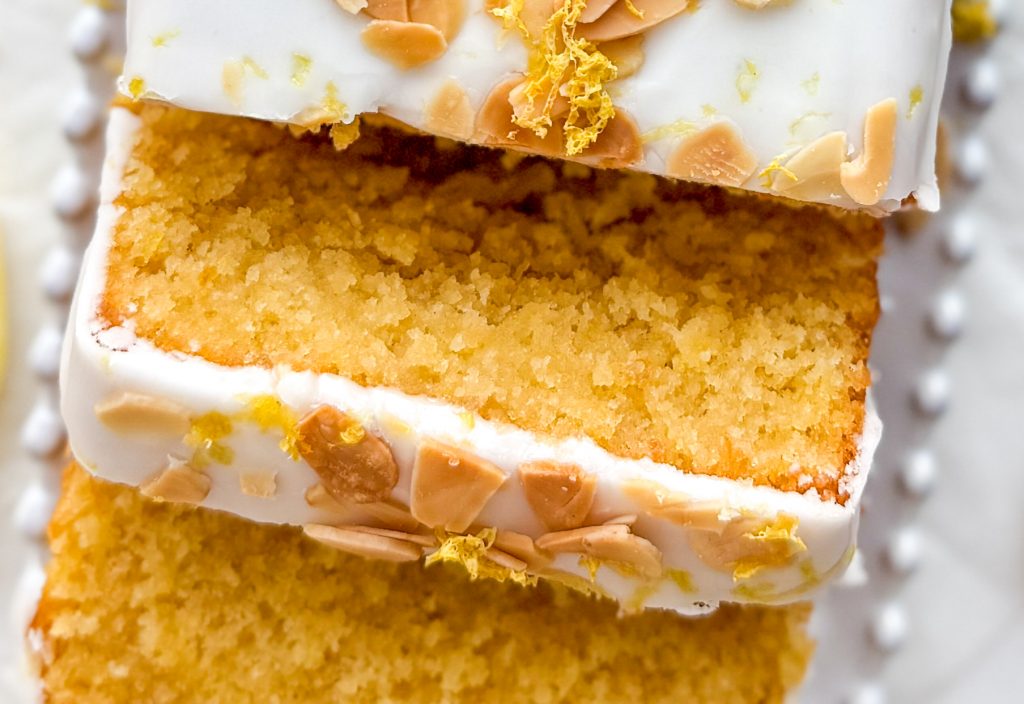
Collect all the ingredients together:
Cake:
- marzipan. You can use white or golden marzipan.
- room temperature unsalted butter. It needs to be soft enough to beat. If it is a little hard, beat it with a whisk before adding anything else.
- caster sugar. You could also use granulated sugar but caster sugar is generally preferred for baking. The smaller crystals dissolve better, giving a smoother batter and more consistent results after baking.
- eggs. I use medium sized eggs, roughly 50 – 55g.
- plain/all-purpose flour
- ground almonds. Or you can use almond flour.
- grated lemon zest. Try and find unwaxed lemons and use a fine grater. If you lemons are waxed, scrub them thoroughly to remove the wax before grating the zest.
- baking powder. Do make sure that your baking powder and bicarbonate of soda are in date. If they are out of date, they may lose their effectiveness.
- bicarbonate of/baking soda. As above.
- fine salt. Ideally a fine sea salt.
- vanilla extract or paste. It is always better to use extract rather than essence. Extracts are derived from the natural product, whereas essence may be derived from a synthetic product or a mixture of the two.
- lemon juice. Use one of the lemons above. The other one you need for the icing.
- sour cream, or you can use Greek/natural yoghurt. I prefer to use full fat products but fat reduced/free will also work. Ensure that whatever you use, hasn’t had any sugar added to it.
Icing:
- icing sugar. Icing sugar can be quite lumpy, so make sure you beat the icing vigorously to ensure it is smooth.
- lemon juice. Double check that there are no pips in the lemon juice. You do not want these in the icing.
To finish:
- grated lemon zest. If you don’t want to grate the zest from another lemon, leave a strip of zest on the skin from one of the lemons above. Don’t throw the skin away when you have juiced it, keep it so you can add the remaining zest to the top of the cake.
- flaked almonds. I like to toast the almonds before adding them to the top of the cake. You can do this in a dry frying pan over a medium heat; it will only take a minute or two. Alternatively, tip them onto a baking tray and pop in the oven for 3 – 4 minutes after you have taken the cake out.
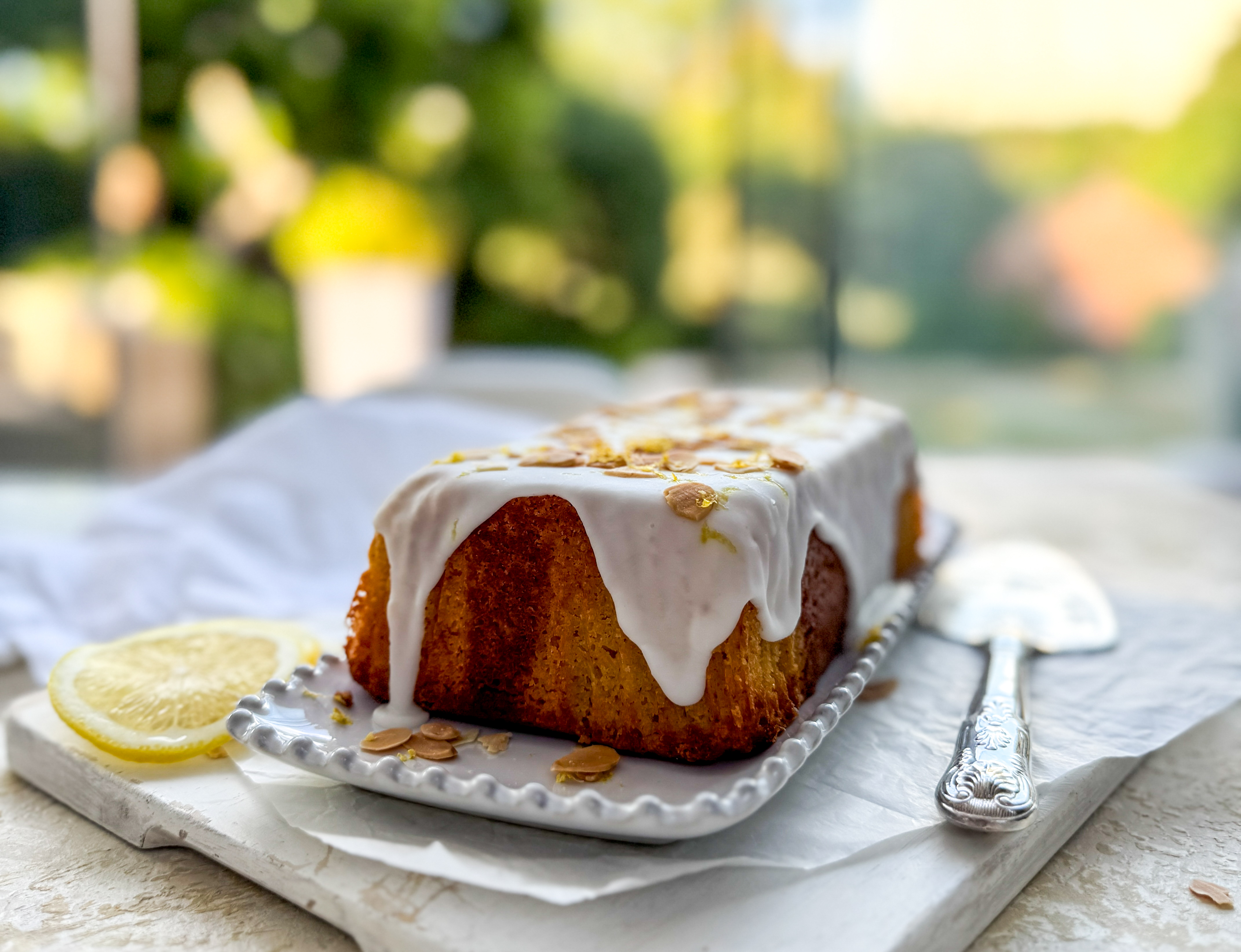
How to make this wonderful Danish cake:
- Sponge cake: first, weigh the marzipan and pop it in the freezer. You need to grate it before you add it to the cake and it is easier to do this when it is a little harder. You don’t want it to be completely solid though – it only needs 10 – 15 minutes in the freezer.
- It is important that the butter is at room temperature and soft enough to beat. If it is a little hard, beat it with a whisk before adding the other ingredients. If it is already quite soft, you do not need to do this.
- Measure all the remaining ingredients, apart from the lemon zest, lemon juice and marzipan, into the mixing bowl with the butter. I place my mixing bowl on top my scales and weigh everything in directly.
- Use an electric whisk to beat until combined. This should take less than a minute. You may need to use a spatula to scape around the edges of the bowl, to make sure everything is mixed evenly.
- Grate the lemon zest directly into the bowl and pour in the lemon juice. Grate the marzipan and add this to the bowl. Fold together, being careful not to over-mix at this stage.
- Tip into your lined baking tin, ensuring the cake goes into all the corners and the surface is level.
- Bake in the centre of a preheated oven for 35 – 45 minutes until cooked. It takes 40 minutes in my oven. You may find the centre has sunk ever so slightly: this is normal. It is cooked when:
- the centre feels springy when lightly touched with your finger and no imprint remains.
- a toothpick inserted into the centre of the cake comes out clean.
- the cake is beginning to come away from the sides of the tin/dish.
- Leave the cake to cool in the tin for 10 minutes. Use the baking parchment to help lift it out of the tin onto a wire rack.
- Cover with icing: when the cake is cool, mix the lemon juice with the icing sugar. Use a balloon whisk to mix well, until there are no lumps. It should be a pouring consistency. If it is too thick, add a little more lemon juice or water. If too runny, add a little extra sugar.
- Remove the baking parchment from the cooled cake and place it on a serving plate, upside down. Inverting it ensures you have a lovely flat surface to ice.
- Pour the icing over the cake. It should cover the top of the cake and trickle down the sides.
- Topping: sprinkle with flaked almonds and a little grated lemon zest. I love to serve it with a cup of tea but equally, it makes a stunning dessert with some cream and some raspberries or strawberries.
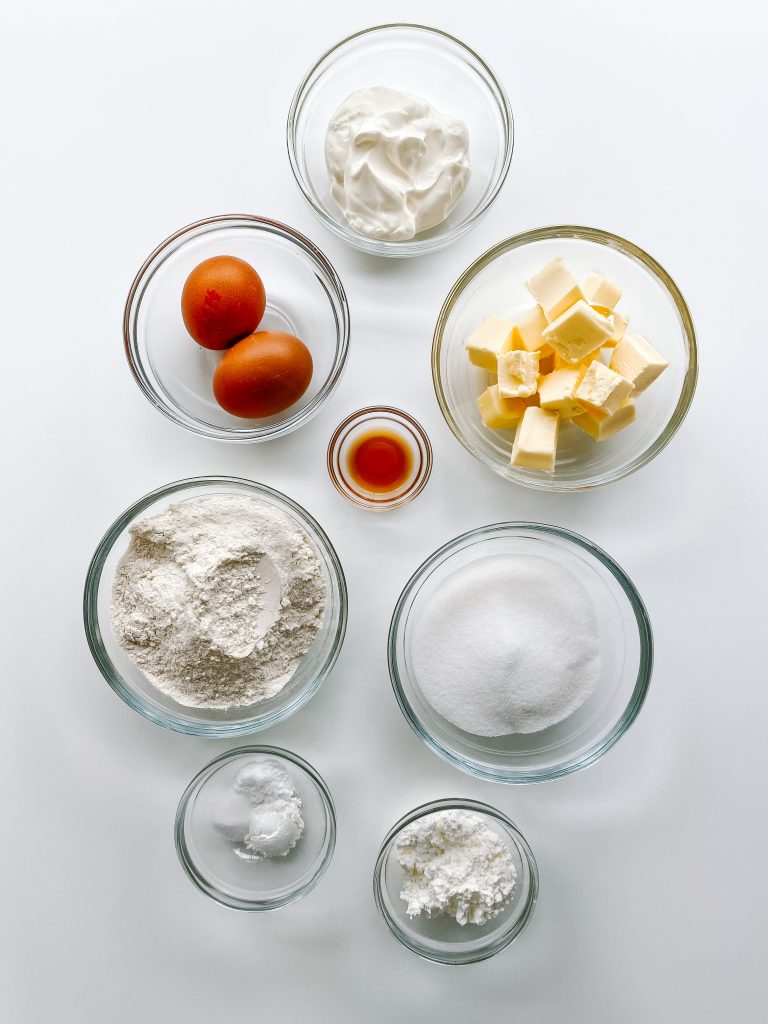
Core ingredients 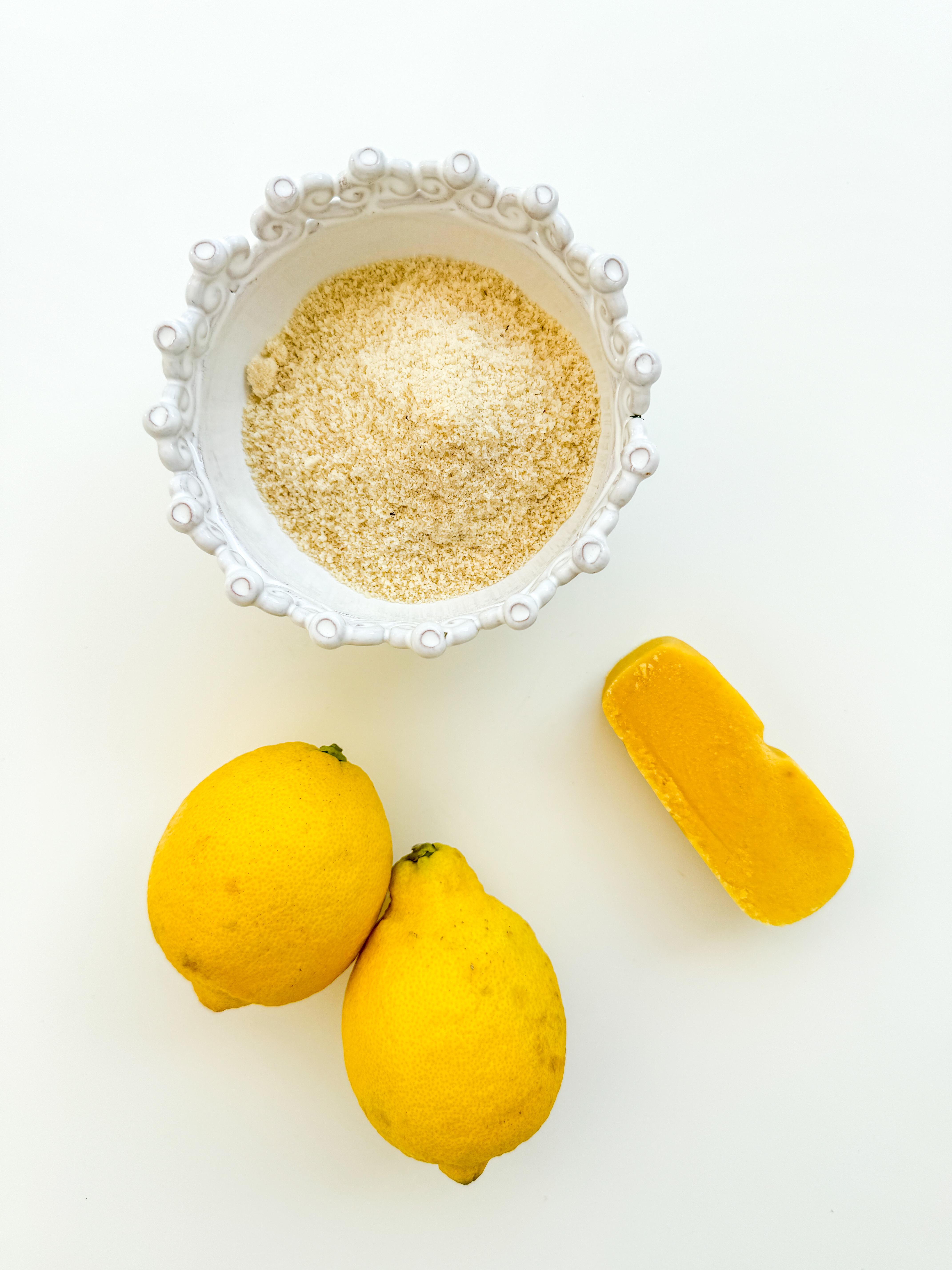
You will also need 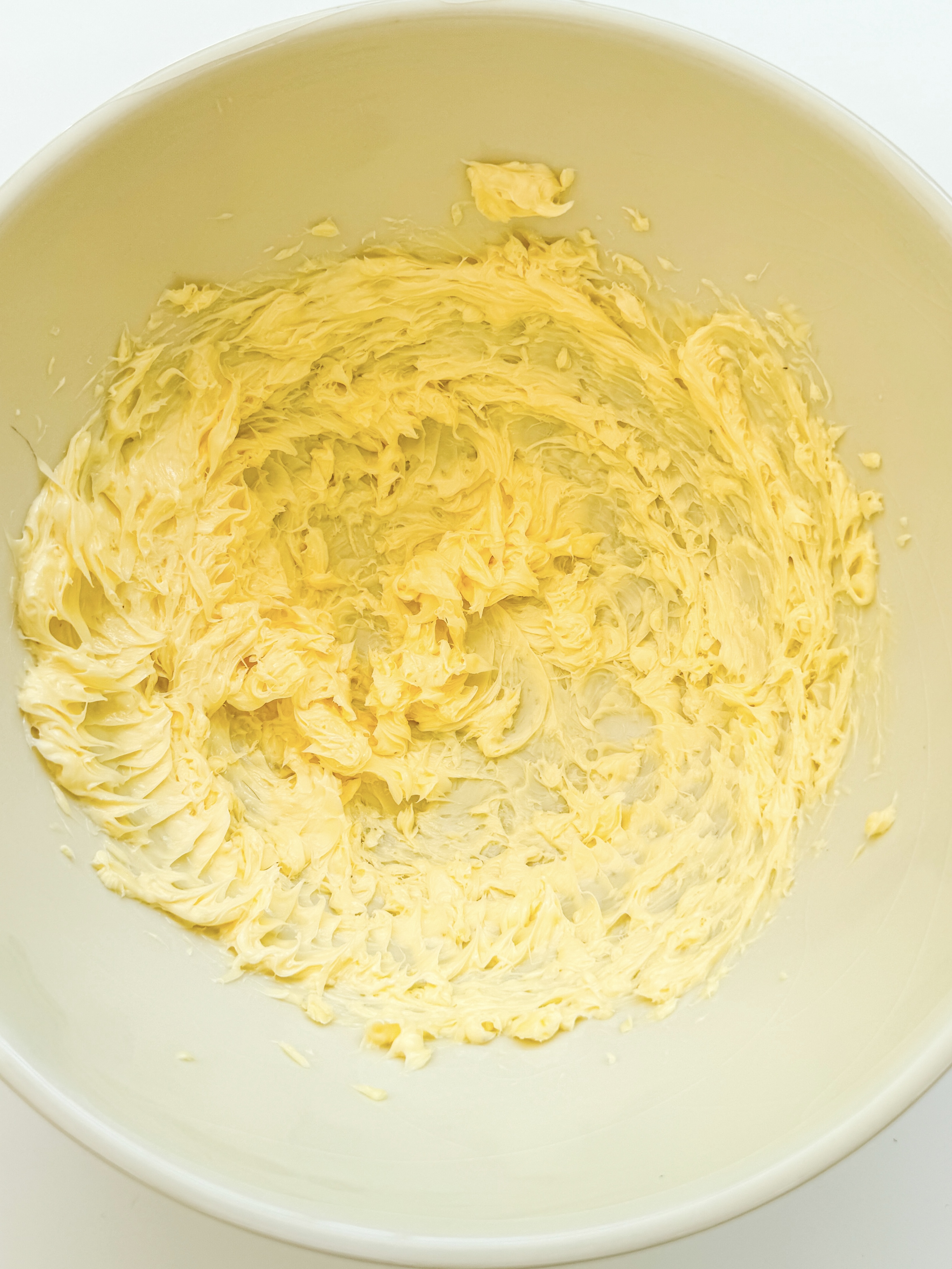
2 Butter 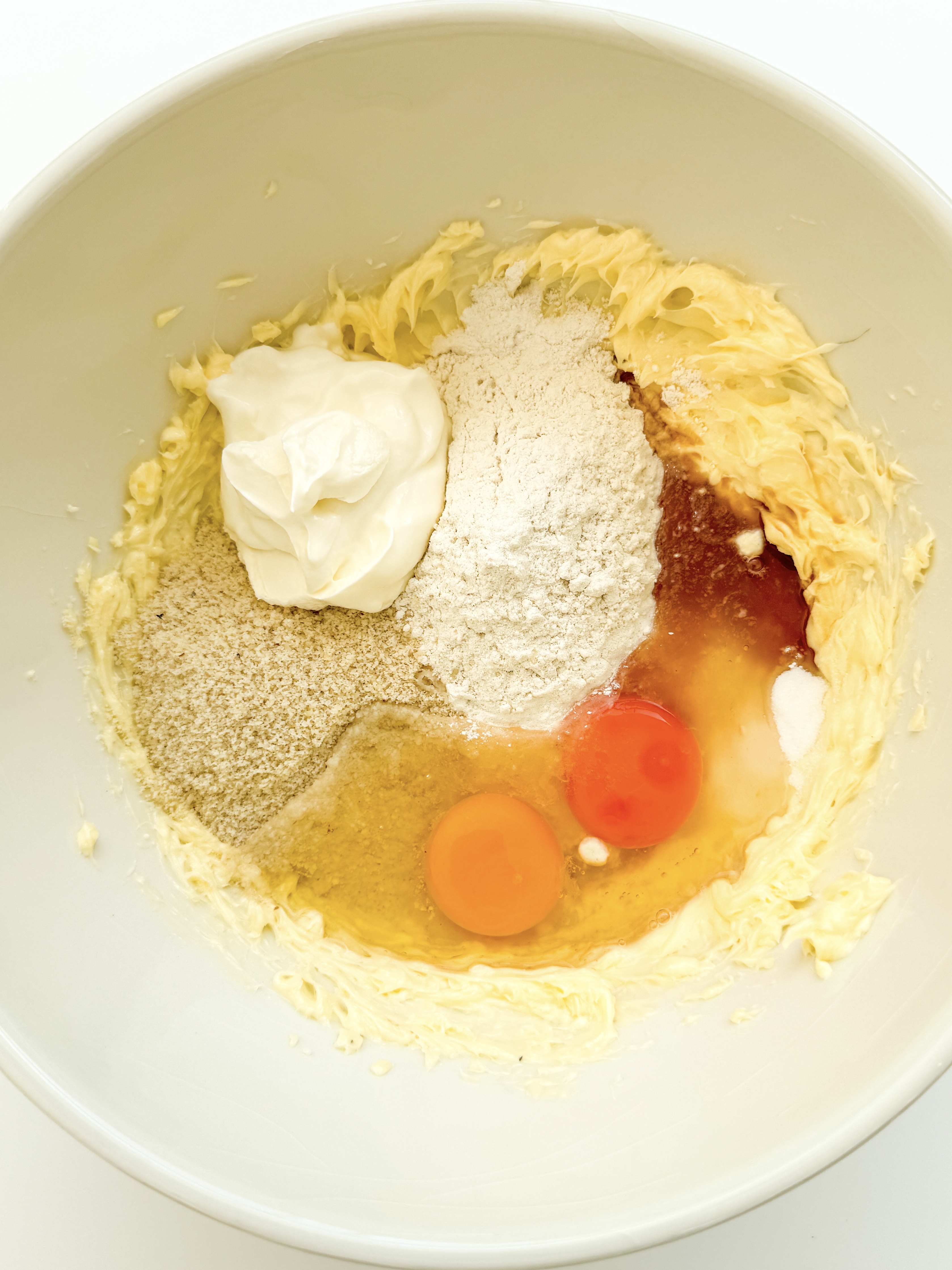
3 Ingred except lemon, marz 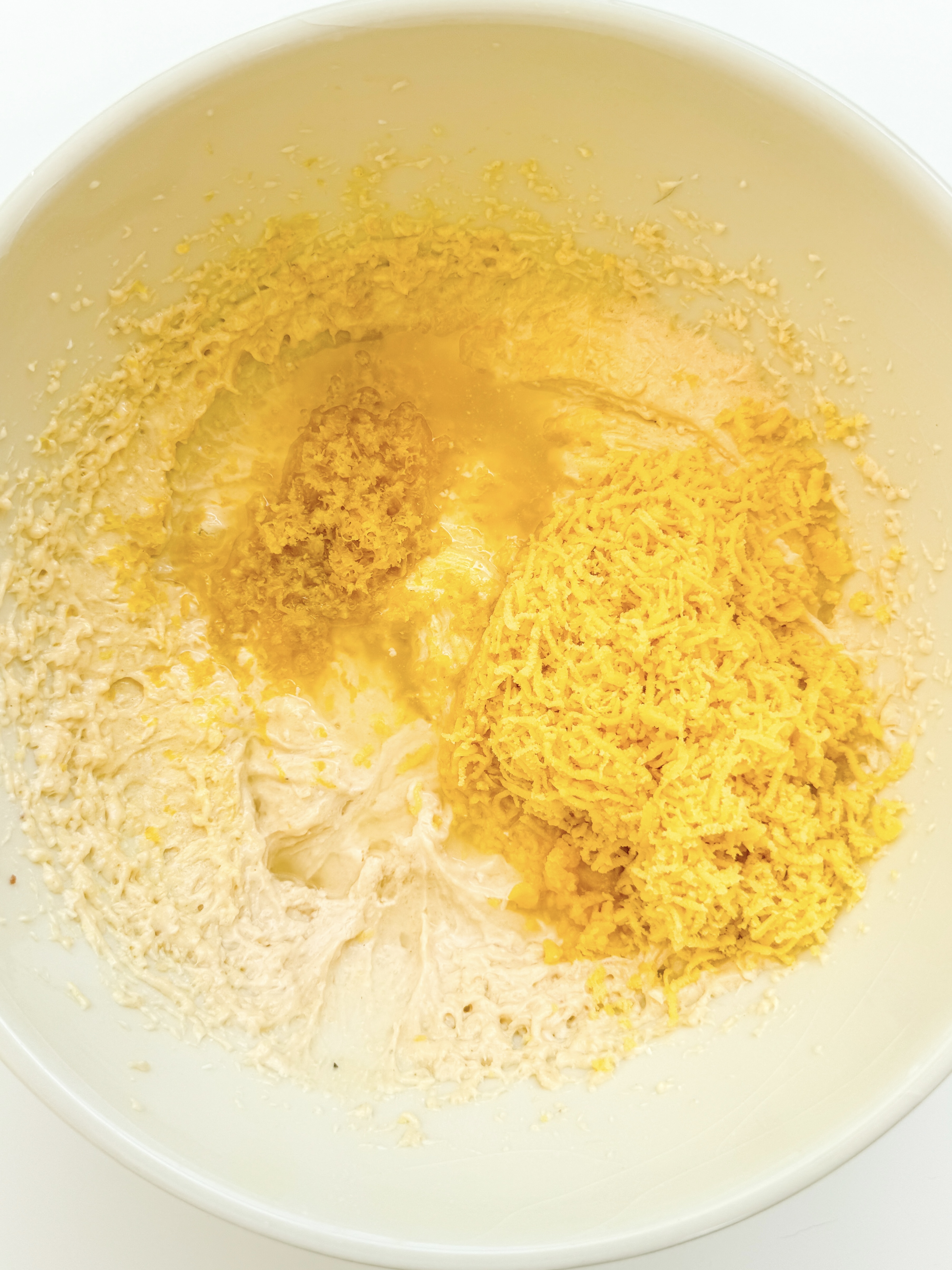
4, 5 Lemon, marzipan 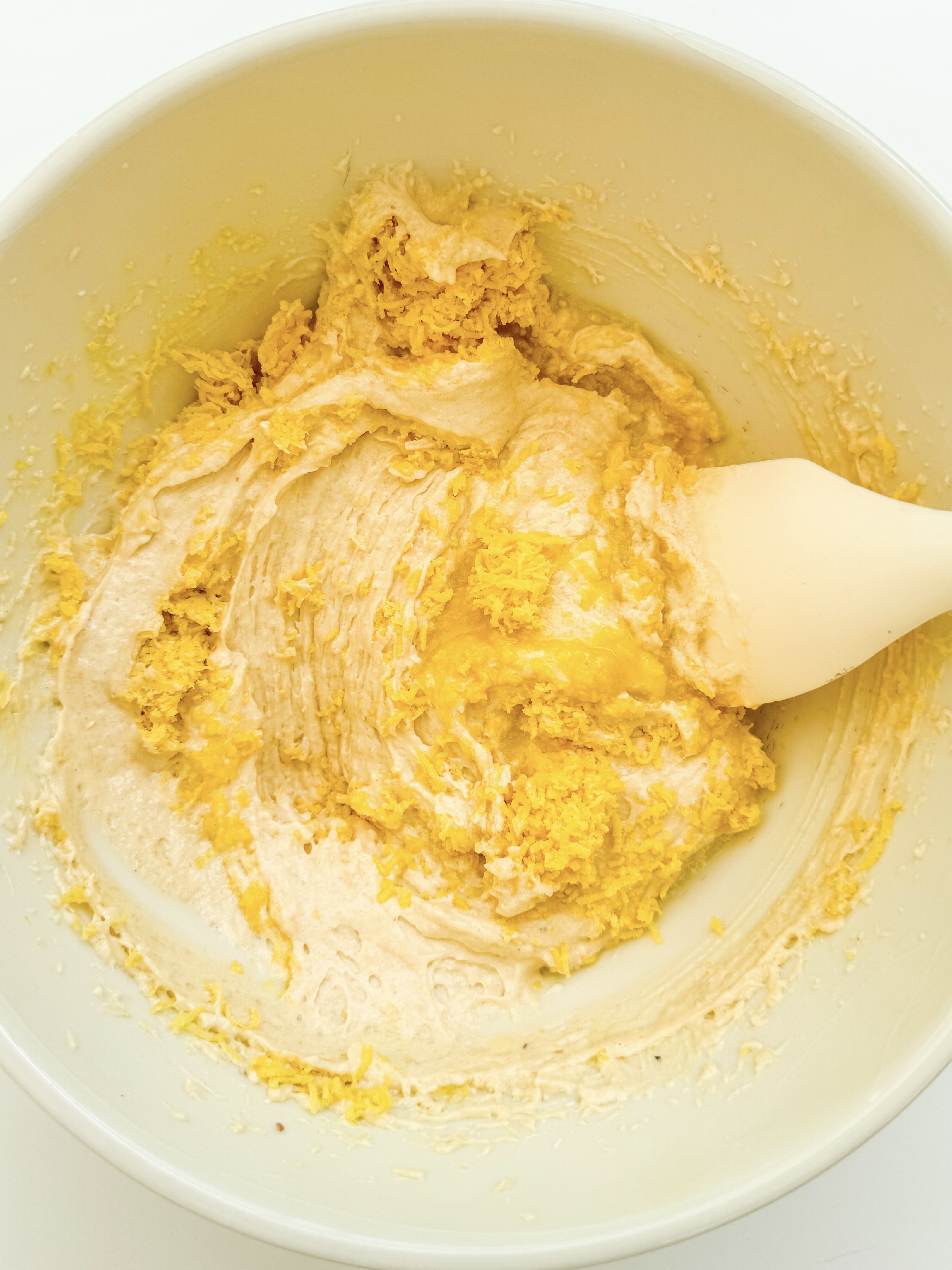
Fold in 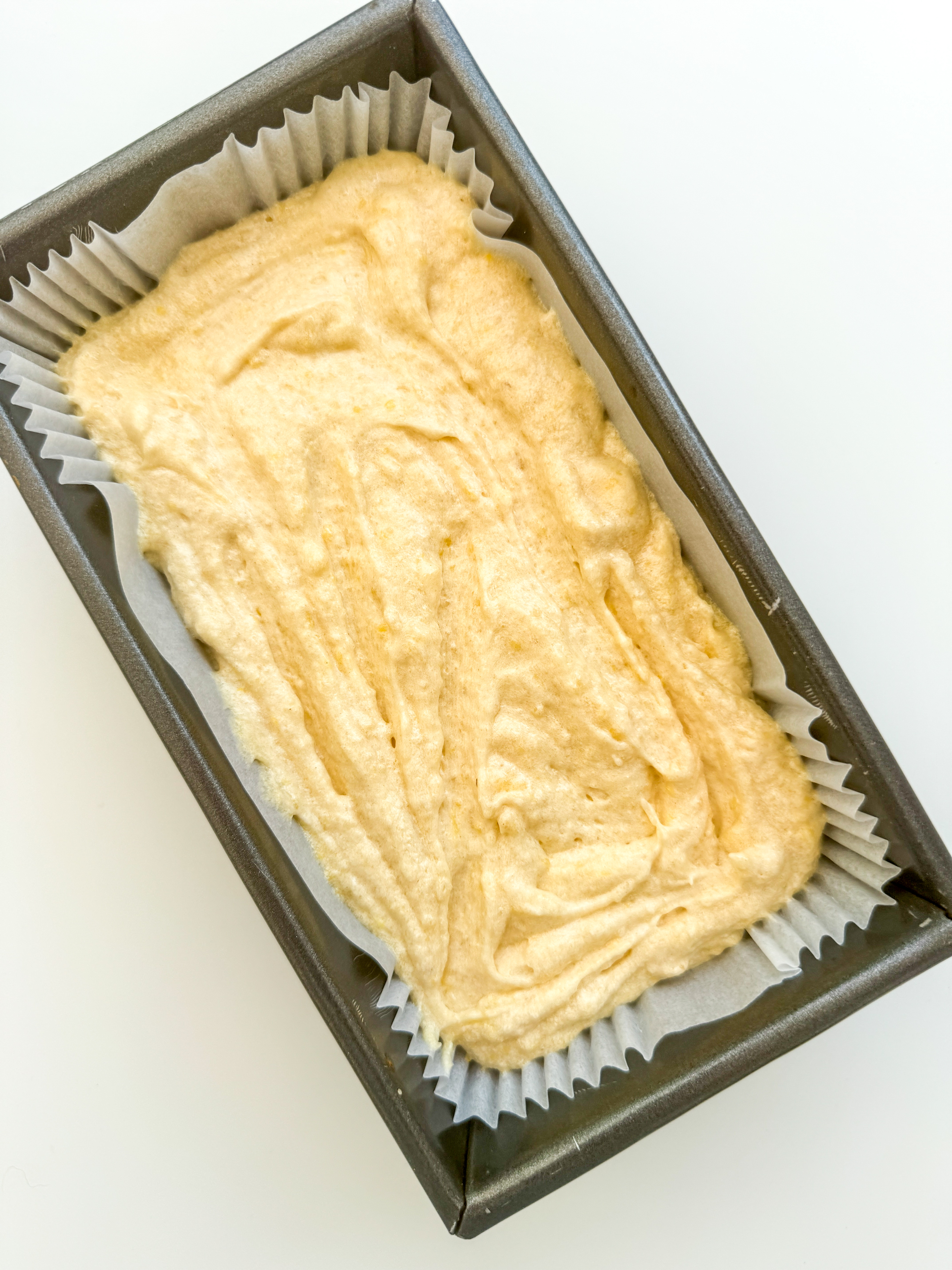
6 Cake tin 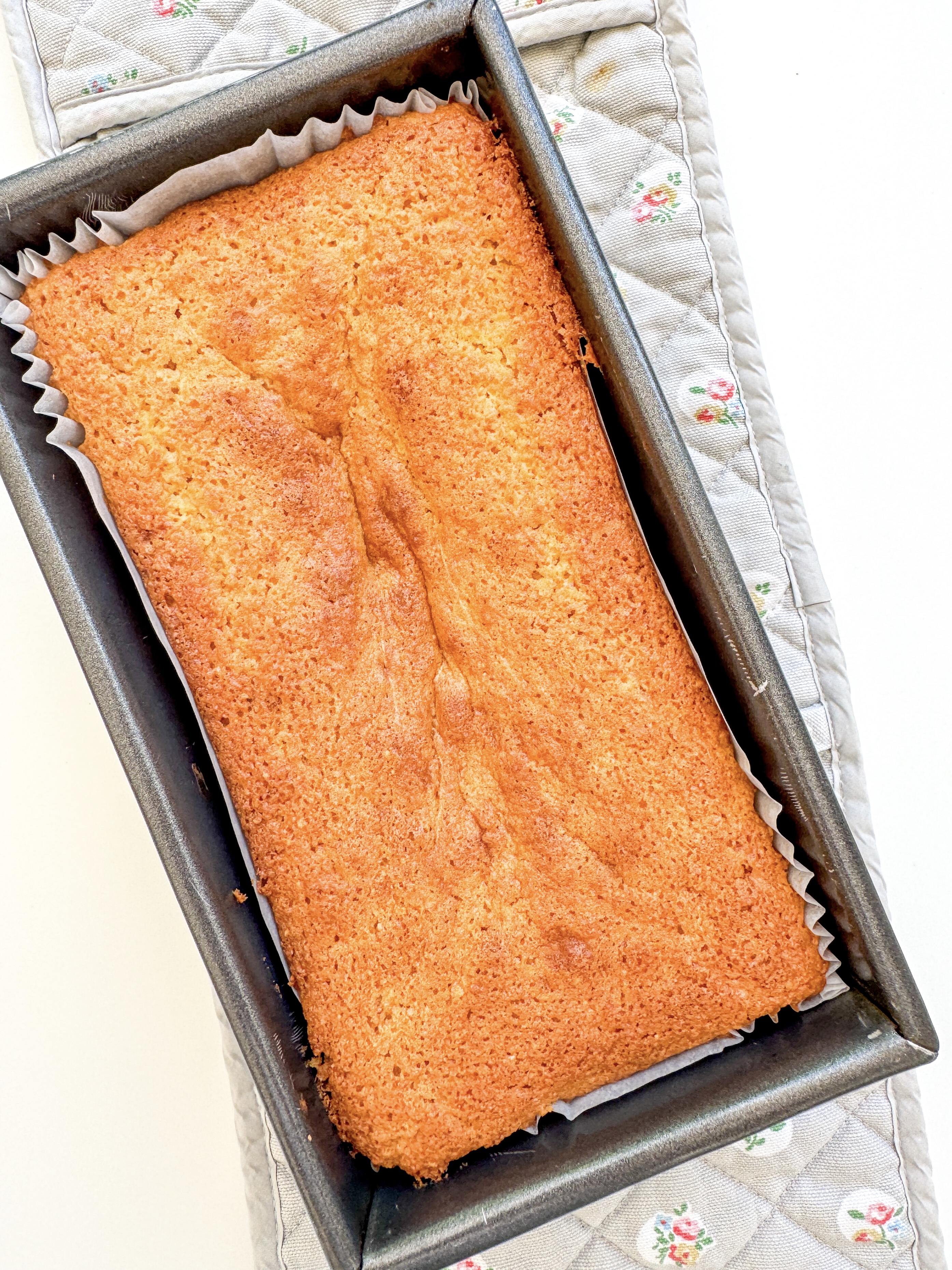
7 Bake 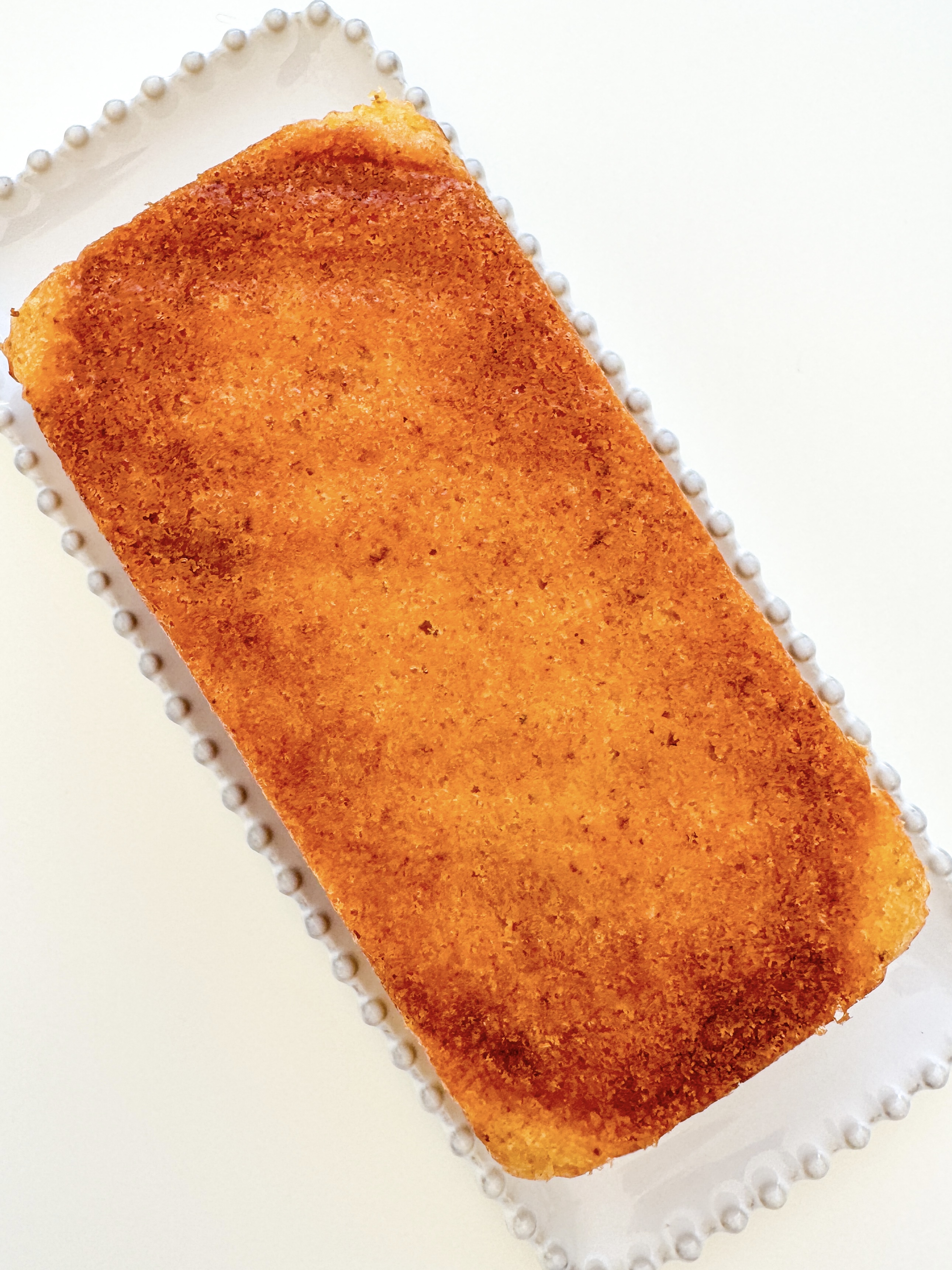
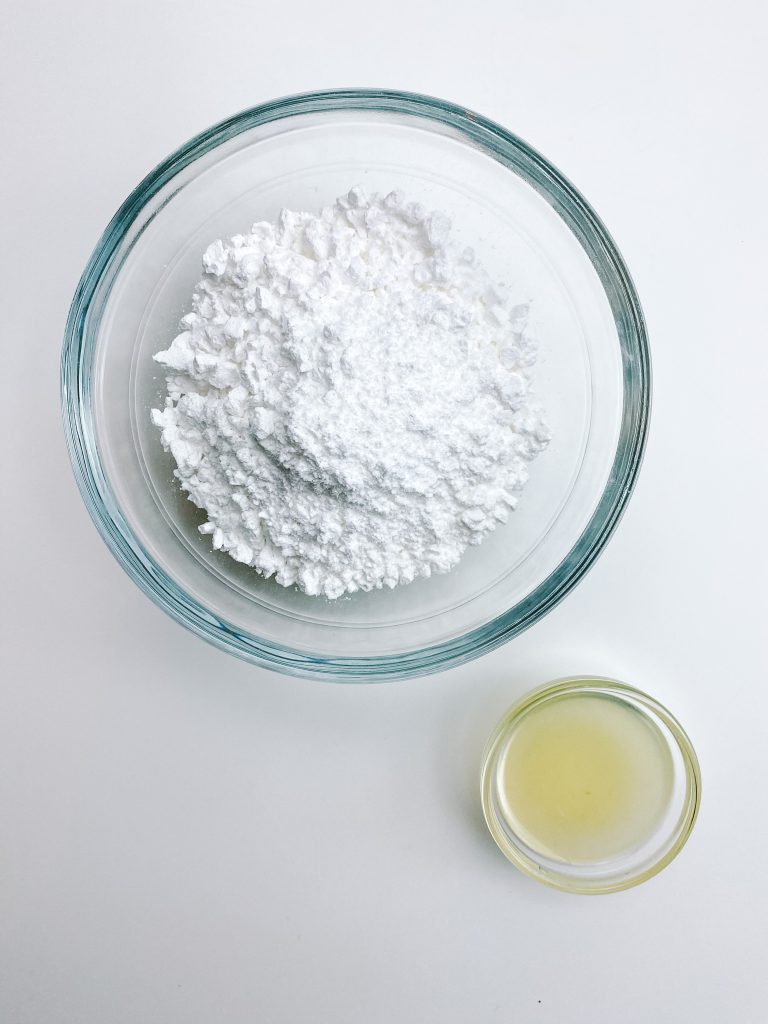
Icing ingredients 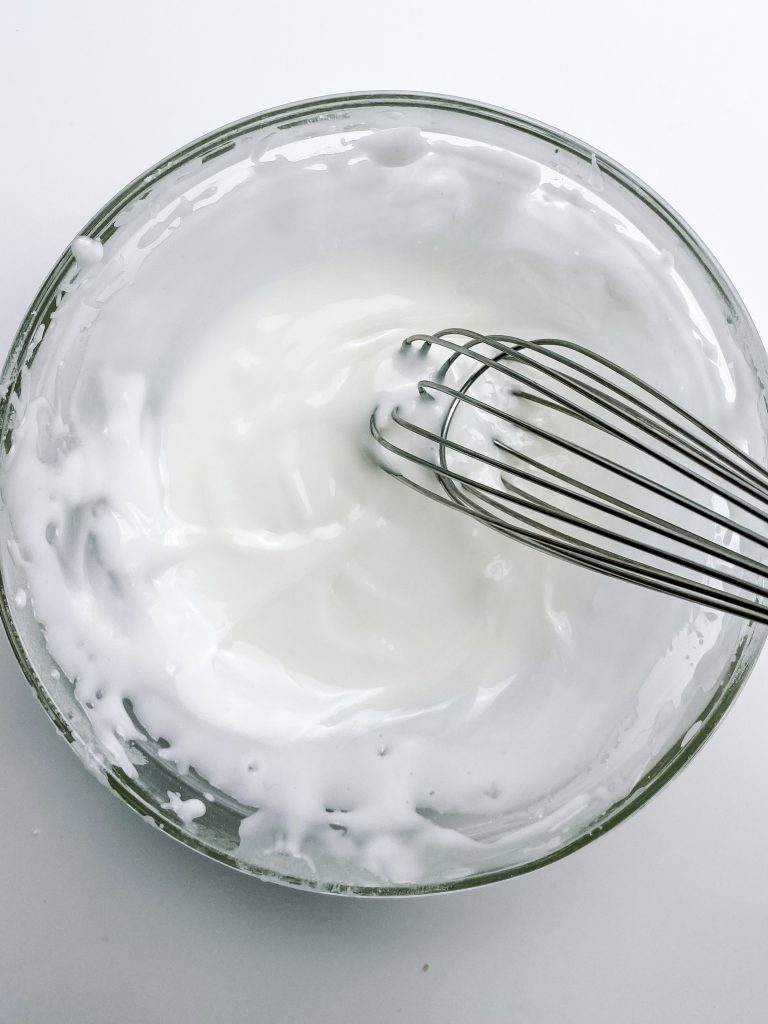
9 Mix 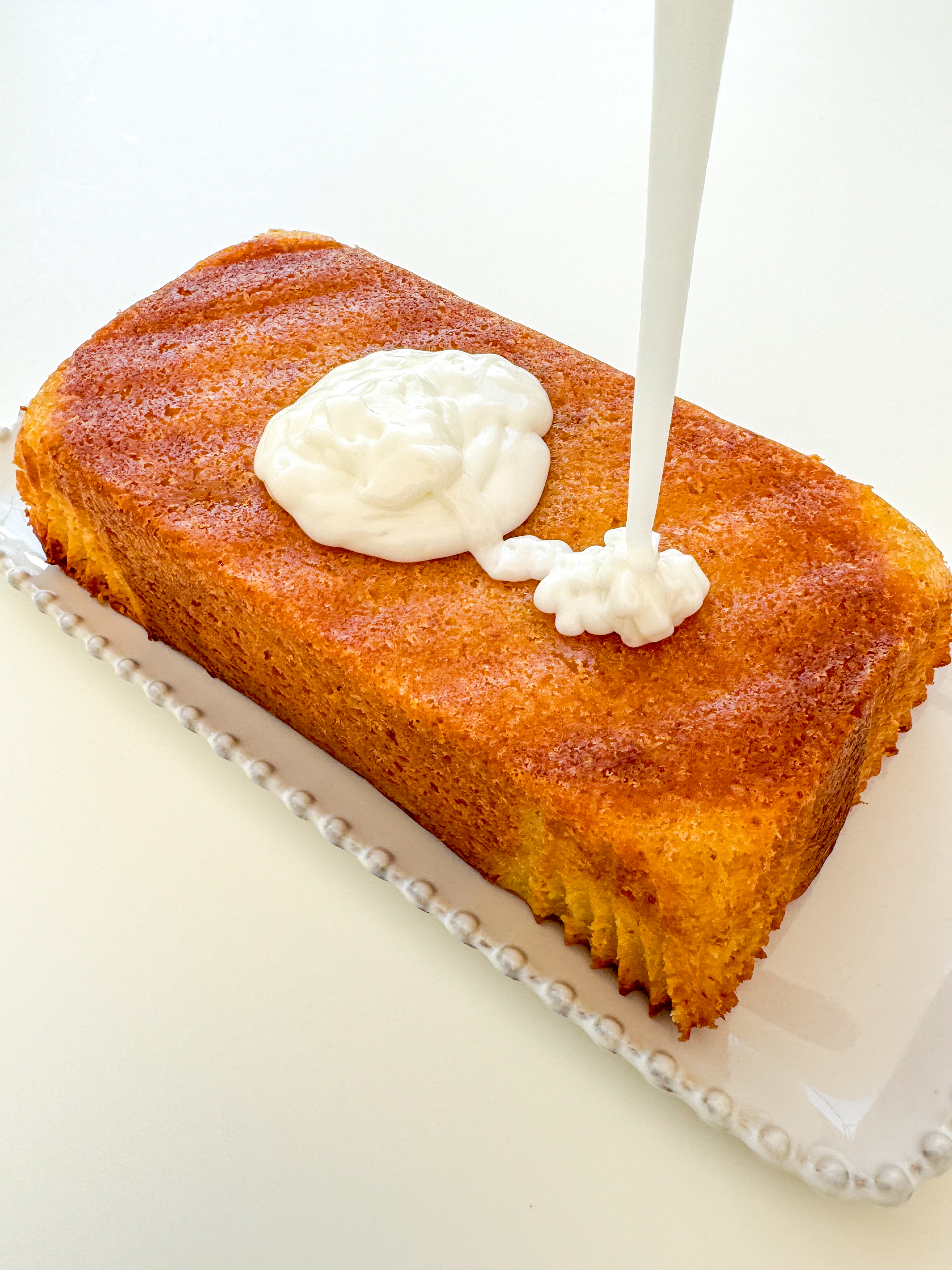
10 Pour on cake 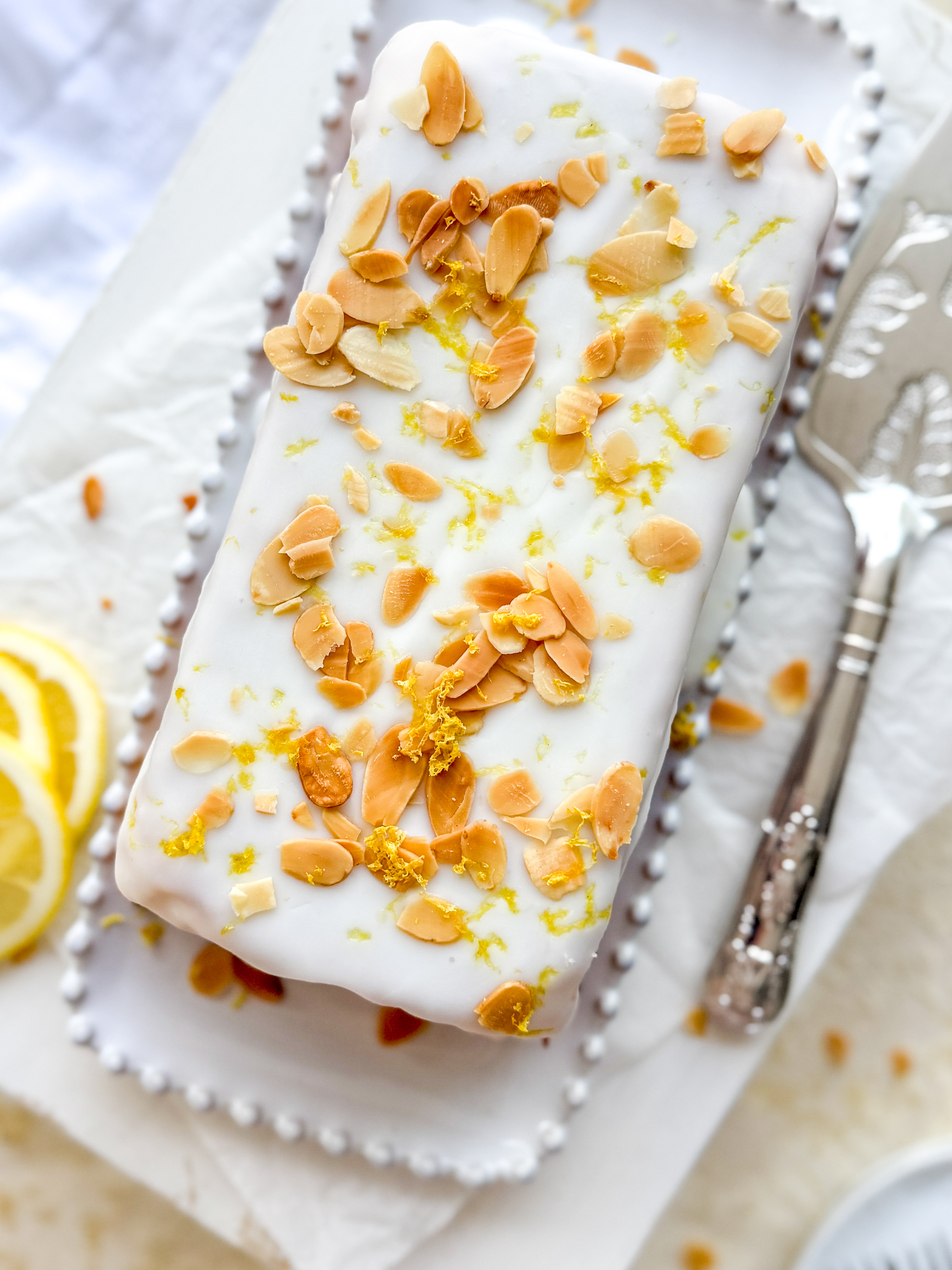
11 Toppings
Made this recipe?
If you make this recipe, do please tag me on instagram @daffodil_kitchen. You could also leave a comment in the box directly below the recipe.
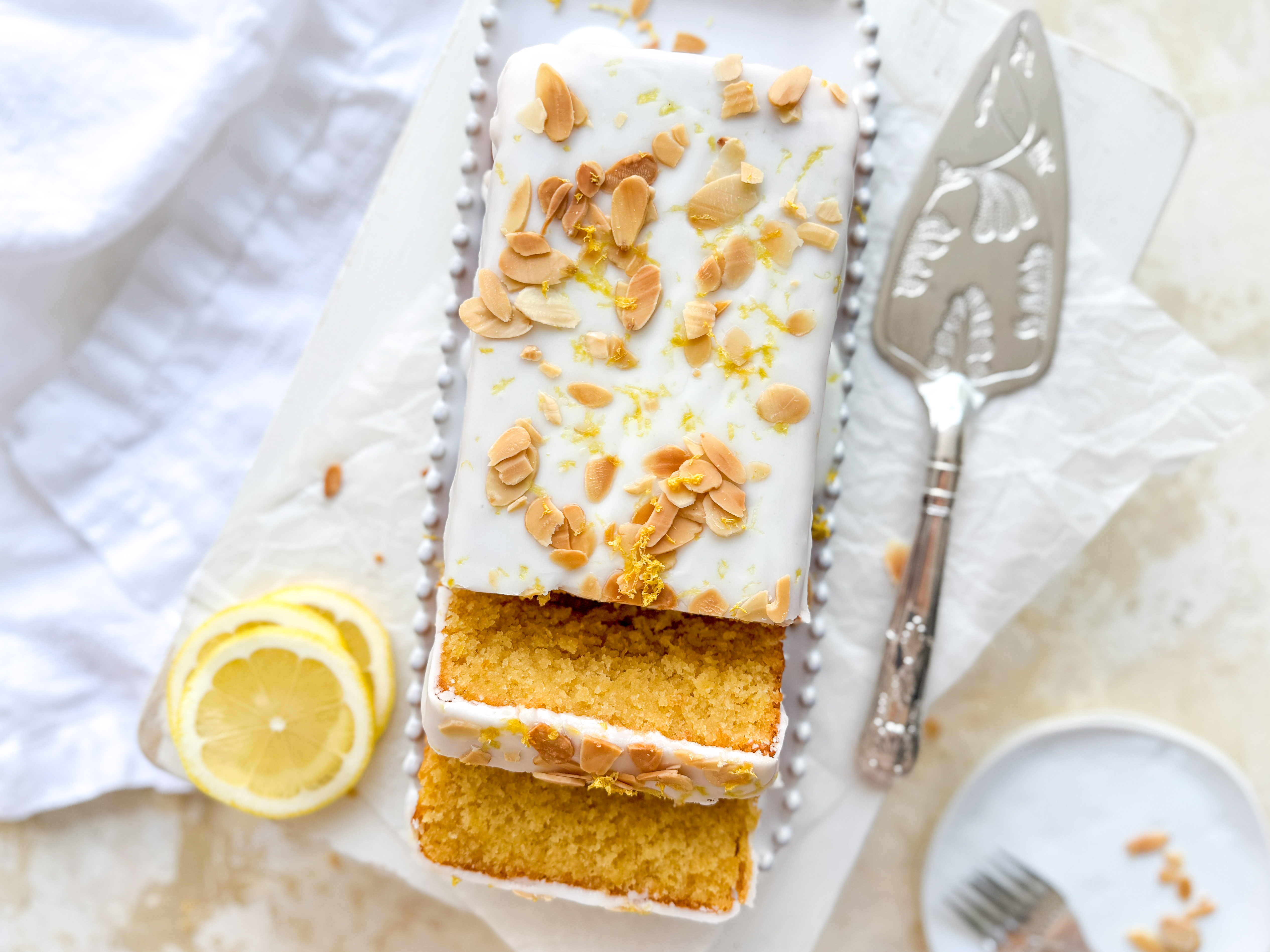
Citronmåne – Lemon Moon Cake, or Lemon Marzipan Cake
This Citronmåne, or Lemon Moon Cake, is a moist, fragrant cake laced with generous quantities of lemon, sweet almonds and marzipan and topped with a zesty lemon icing. If a cake can be considered a national treasure, it seems that Citronmåne would fall into this category in Denmark.
Makes 1 x 900g loaf cake or 1 x 20cm/8in round cake
Ingredients
Cake:
- 100g marzipan
- 130g room temperature unsalted butter
- 130g caster sugar
- 2 eggs
- 130g plain/all-purpose flour
- 50g ground almonds
- grated zest of 2 lemons.
- ¾ teaspoon baking powder
- ¼ teaspoon bicarbonate of/baking soda
- ¼ teaspoon fine salt
- 1 teaspoon vanilla extract or paste
- juice from 1 lemon
- 100g sour cream, or use Greek/natural yoghurt
Icing:
- 150g icing sugar for a 900g/2lb loaf tin or 200g for a deep-sided 20cm/8 inch round cake tin.
- 5 – 8 teaspoons lemon juice
Topping:
- grated lemon zest
- roasted flaked almonds (See Recipe Notes for roasting details.)
Instructions
-
Collect together your equipment (see Recipe Notes below) and ingredients.
-
Preheat oven to 180°C/350°F/Gas 4 (fan 160°C) and line a 900g/2lb loaf tin with baking parchment or use a cake tin liner. You can also use a deep-sided 20cm/8 inch greased and lined round cake tin.
-
Sponge cake: first, weigh the marzipan and pop it in the freezer for 10 – 15 minutes whilst you make the cake.
-
It is important that the butter is at room temperature and soft enough to beat. If it is a little hard, beat it with a whisk before adding the other ingredients. If it is already quite soft, you do not need to do this.
-
Measure all the remaining ingredients, apart from the lemon zest, lemon juice and marzipan, into the mixing bowl with the butter. Use an electric whisk to beat until combined. This should take less than a minute. You may need to use a spatula to scape around the edges of the bowl, to make sure everything is mixed evenly.
-
Grate the lemon zest directly into the bowl and pour in the lemon juice. Grate the marzipan and add this to the bowl also. Fold together, being careful not to over-mix at this stage.
-
Tip into your lined baking tin, ensuring the cake goes into all the corners and the surface is level. Bake in the centre of a preheated oven for 35 – 45 minutes until cooked. (It takes 40 minutes in my oven.) You may find the centre has sunk ever so slightly: this is normal. It is cooked when:
– the centre feels springy when lightly touched with your finger and no imprint remains.
– a toothpick inserted into the centre of the cake comes out clean.
– the cake is beginning to come away from the sides of the tin/dish.
-
Leave the cake to cool in the tin for 10 minutes. Then, use the baking parchment to help lift it out of the tin onto a wire rack.
-
Cover with icing: when the cake is cool, mix the lemon juice with the icing sugar. Use a balloon whisk to mix well, until there are no lumps. It should be a pouring consistency. If it is too thick, or too thin, adjust with extra sugar or juice as necessary.
-
Remove the baking parchment from the cooled cake. Place it on a serving plate, upside down to ensure you have a flat surface to ice.
-
Pour the icing over the cake. It should cover the top of the cake and trickle down the sides.
-
Topping: sprinkle with flaked almonds and a little grated lemon zest. I love to serve it with a cup of tea but equally, it makes a stunning dessert with some cream and some raspberries or strawberries.
Recipe Notes
Equipment:
- kitchen scales and measuring spoons
- mixing bowl and electric whisk
- 900g/2lb loaf tin lined with baking parchment or a 20cm/8inch round tin lined with baking parchment
- mixing bowl for the crunchy topping
- grater
- reamer
More details on ingredients and instructions:
Please see the ingredient list and the instructions in the post above, for further information.
Flaked almonds
I toast the almonds before adding them to the top of the cake. You can do this in a dry frying pan over a medium heat; it will only take a minute or two. Alternatively, tip them onto a baking tray and pop in the oven for 3 – 4 minutes after you have taken the cake out.
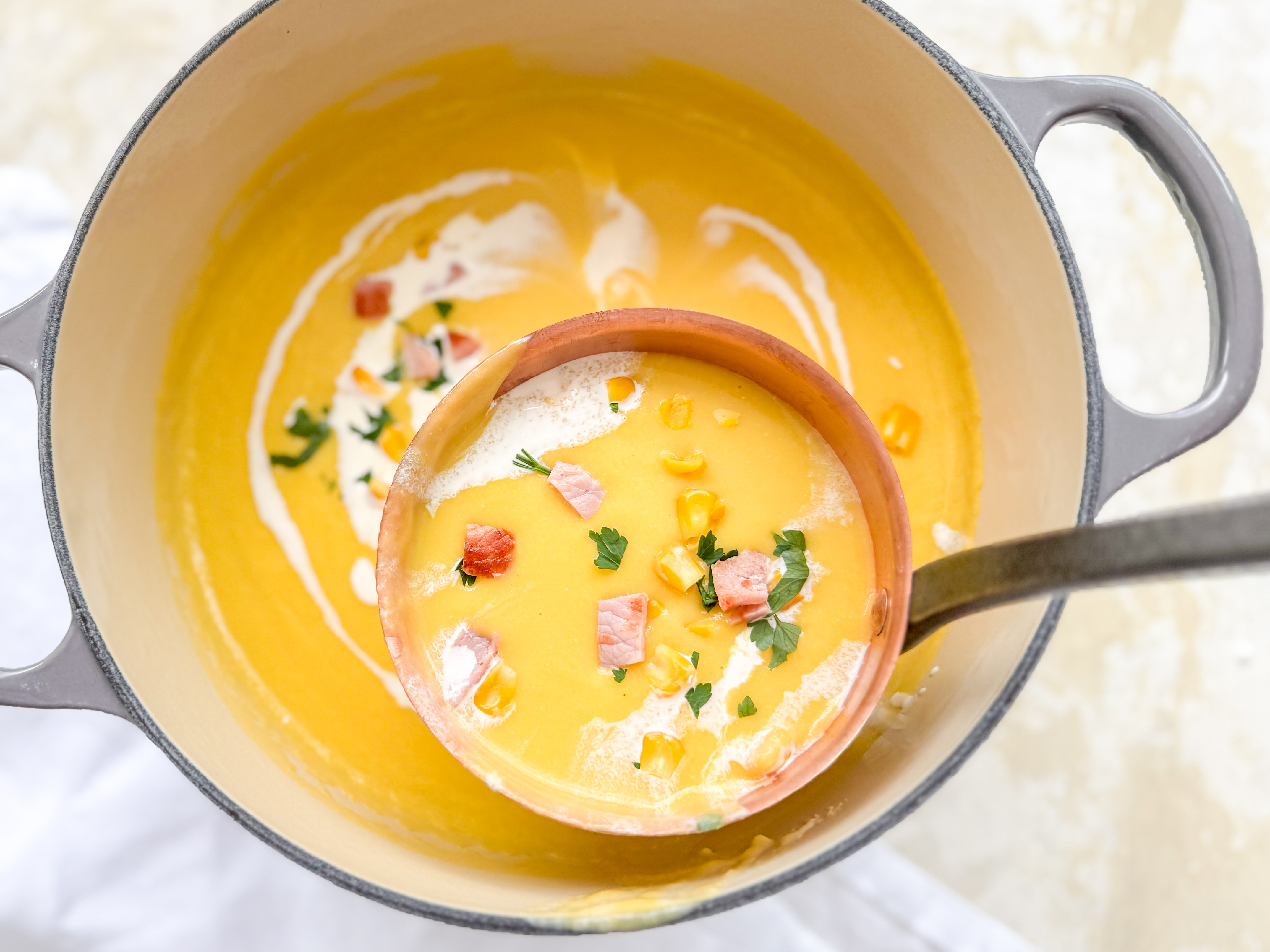
Cream of Sweetcorn Soup
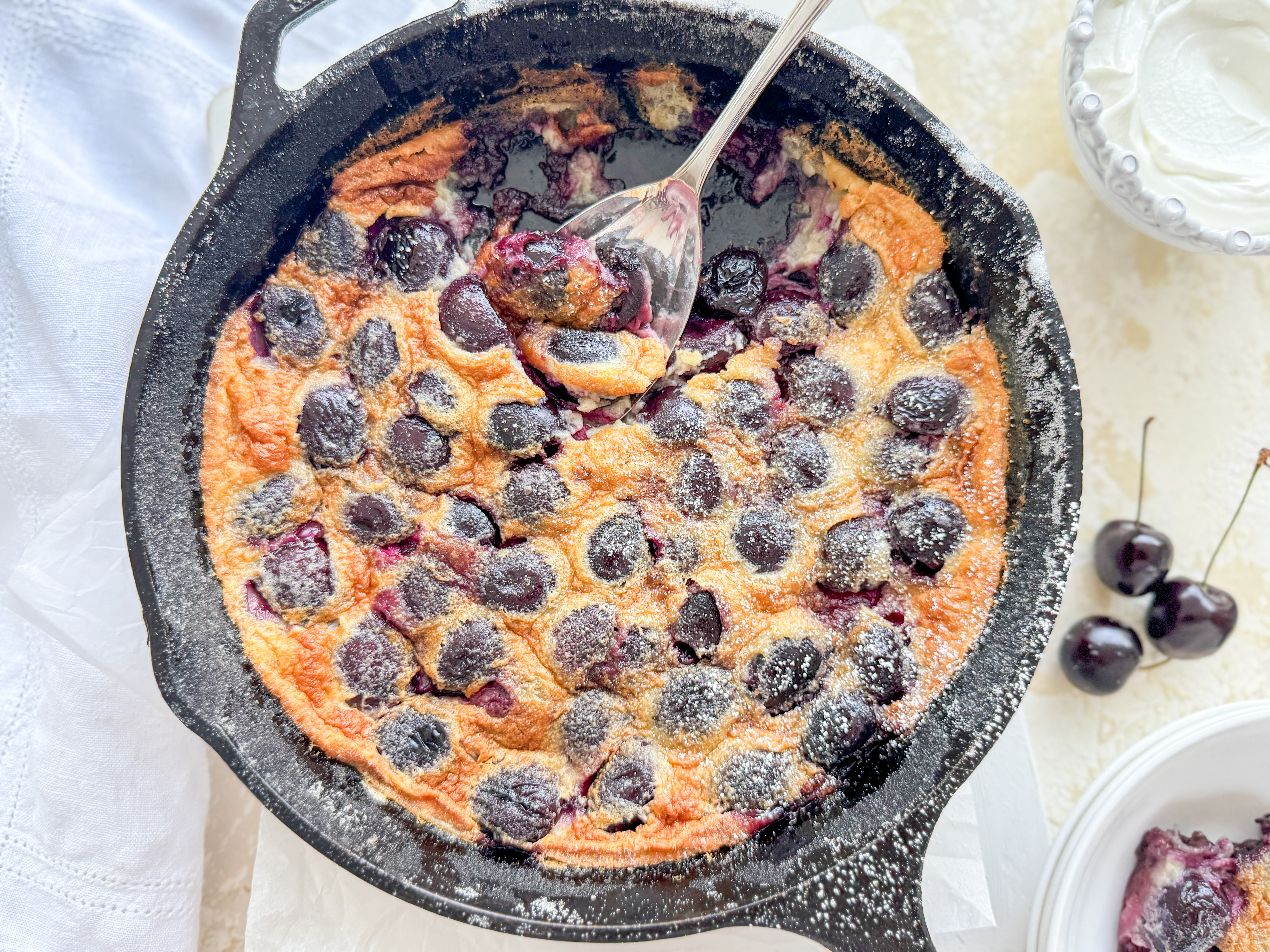
Cherry Clafoutis
You May Also Like
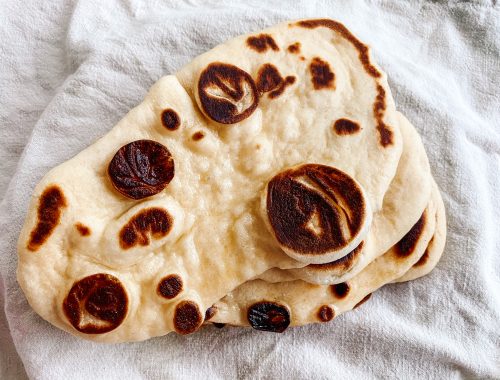
Naan Bread
30th May 2020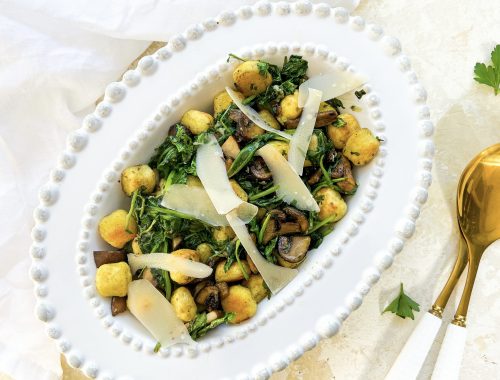
Roast Gnocchi and Mushrooms with Wilted Spinach and Roast Garlic Parsley Butter
18th October 2022

